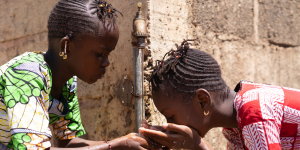Understanding Cholera: Symptoms, Management, and Prevention

Understanding Cholera: Symptoms, Management, and Prevention
Cholera is an acute diarrheal illness caused by infection of the intestine with the bacterium Vibrio cholerae. The disease is typically contracted through ingestion of contaminated water or food and is often associated with inadequate sanitation and poor water quality. While cholera can be life-threatening if not treated promptly, it is preventable and manageable with the right measures.
Symptoms of Cholera
Cholera symptoms can range from mild to severe and usually appear within a few hours to five days after ingestion of the bacteria. The most common symptoms include:
Watery Diarrhea: Often described as “rice-water stools” due to its pale, milky appearance, this symptom can lead to rapid fluid loss.
Vomiting: This can occur at the same time as diarrhea and further contributes to fluid loss.
Dehydration: Severe dehydration is a critical concern, with signs including dry mouth, extreme thirst, reduced urine output, sunken eyes, and wrinkled skin. In extreme cases, dehydration can lead to shock and death within hours if untreated.
Leg Cramps: Caused by the rapid loss of salts (electrolytes) from the body.
In severe cases, the rapid loss of fluids can lead to hypovolemic shock and death within hours. Therefore, recognizing and treating symptoms quickly is crucial.
Four (4) Ways to Manage Cholera
Immediate and effective treatment of cholera involves rehydration and antibiotics when necessary.
Rehydration: The primary treatment for cholera is rehydration. This can be administered orally (Oral Rehydration Salts or ORS) or intravenously in severe cases. ORS is a simple mixture of sugar and salts that can be dissolved in clean water. It is effective in replenishing lost fluids and electrolytes.
Antibiotics: While not always necessary, antibiotics can reduce the duration and severity of cholera. Commonly used antibiotics include doxycycline, azithromycin, and ciprofloxacin. However, antibiotic resistance is a growing concern, so their use should be judicious and based on local guidelines.
Zinc Supplements: For children, zinc supplements can reduce the duration and severity of diarrhea.
Nutrition: Maintaining nutritional intake is important, especially in children. Continued breastfeeding and providing nutritious food can aid recovery.
Preventive Healthcare Measures for Cholera
Preventing cholera involves a combination of strategies aimed at improving water quality, sanitation, and hygiene practices.
Safe Water Supply:
Boiling Water: Boiling water is a simple and effective method to kill Vibrio cholerae.
Chemical Treatment: Using chlorine or iodine tablets can disinfect water.
Water Filtration: Filters can remove bacteria from drinking water.

Sanitation:
Proper Waste Disposal: Ensuring human waste is disposed of safely can prevent contamination of water sources.
Sanitation Infrastructure: Building and maintaining latrines and sewage systems help reduce the spread of cholera.
Hygiene:
Handwashing: Regular handwashing with soap, especially before eating or preparing food, and after using the toilet.
Food Safety: Ensuring food is cooked thoroughly and avoiding raw or undercooked seafood.
Vaccination: Oral cholera vaccines (OCVs) can provide short-term protection and are used in areas with high transmission rates or during outbreaks. Two doses are typically required for full protection.
Public Health Education:
Educating communities about cholera transmission and prevention is vital. Information campaigns can encourage behaviors that reduce risk.
Rapid Response to Outbreaks:
Establishing quick response teams to identify, isolate, and treat cholera cases can limit the spread during outbreaks.
Global Efforts and Challenges
Cholera remains a significant public health challenge, particularly in areas with poor infrastructure and limited access to clean water and healthcare. Global initiatives, such as those led by the World Health Organization (WHO) and various non-governmental organizations (NGOs), focus on reducing cholera deaths and improving water, sanitation, and hygiene (WASH) in vulnerable regions.
Efforts include:
Surveillance Systems: Monitoring cholera cases to detect outbreaks early.
Emergency Preparedness: Stockpiling essential supplies like ORS and vaccines.
Community Engagement: Working with local communities to implement sustainable WASH solutions.
In conclusion, while cholera can be deadly, it is preventable and treatable with the right interventions. Ensuring access to clean water, proper sanitation, hygiene education, and prompt medical treatment can save lives and significantly reduce the burden of this disease. Global collaboration and sustained efforts are essential to combat and eventually eradicate cholera.


